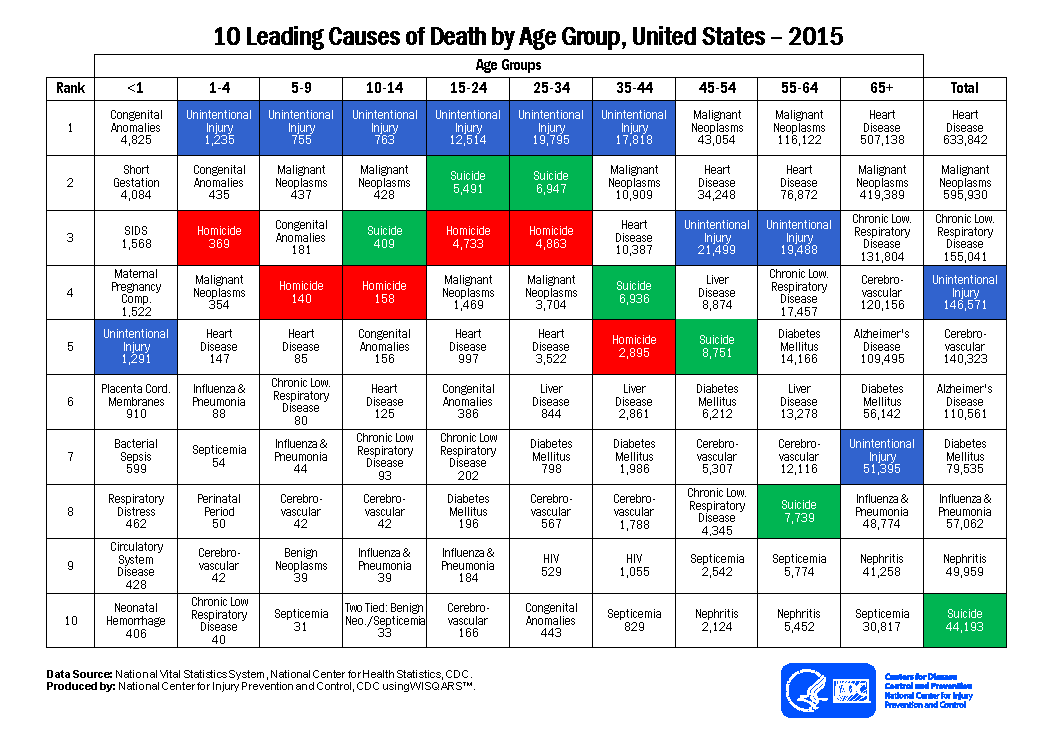Assessing for Suicidal Ideation
Suicide is a leading cause of death in the United States, and it is likely that every counselor will work with clients who have active suicidal ideation. Thus, it is critical that counselors understand risk factors for attempting or completing suicide as well as how to assess for suicidal ideation. The assessment is only half of the process, though. Clients who have moderate to severe suicidal ideation will require a follow up plan, which might include support, supervision, or hospitalization.
Suicide Hotlines
There are multiple suicide hotline/crisis line numbers available, so that callers can talk or text with trained operators. The National Suicide Prevention Lifeline also provides services through text message or online chat.
The National Suicide Prevention Lifeline:
1-800-273-TALK (8255)
Wikipedia has a relatively comprehensive list of crisis lines around the world that are available for veterans, GLBTQ+, and others.

Articles on Assessing Suicidal Ideation
Assessing suicidal ideation carries more weight than many other assessments, as peoples lives are at stake. Thus, counselors cannot rely on scores or scales to determine what action to take to keep a client safe. There are, however, guides to help counselors gather information, which can be used in conjunction with professional judgement. Supervision and consultation are invaluable for counselors who are assessing suicidal ideation.
Locate and read Granello, 2010.
There are many formats available for counselors to use when assessing suicidal ideation. Locate and read the Juhnke, Granello, and Lebron-Striker (2007) article on assessing suicidal ideation using the IS PATH WARM acronym.
IS PATH WARM stands for:
(Juhnke, Granello, & Lebron-Striker, 2007, p. 1)
- Ideation
- Substance Use
- Purposelessness
- Anger
- Trapped
- Hopelessness
- Withdrawing
- Anxiety
- Recklessness
- Mood
CDC Suicide Data & Statistics
The Centers for Disease Control and Prevention (CDC)compile statistics based on people attempting and completing suicide. Counselors can benefit from these statistics, as they are useful for identifying risk factors and causes associated with attempting or completing suicide. Spend some time familiarizing yourself with their website and statistics.
SAMHSA SAFE-T
The Substance Abuse and Mental Health Service Administration (SAMHSA) provides many resources for mental health professionals, including a flier on assessing suicidal ideation. They encourage practitioners to assess for:
- Ideation: frequency, intensity, duration--in the last 48 hours, past month and worst ever
- Plan: timing, location, lethality, availability, preparatory acts
- Behaviors: past attempts, aborted attempts, rehearsals (tying noose, loading gun), vs. non-suicidal self injurious actions
- Intent: extent to which the patient (1) expects to carry out the plan and (2) believes the plan/act to be lethal vs. self-injurious; Explore ambivalence: reasons to die vs. reasons to live
Mental Health and Suicide Awareness
Spreading awareness and starting conversations on mental health and suicidal ideation can be life saving. Mental health awareness is starting to be addressed in mainstream media, for example, this music video by Logic.
Assessing Suicidal Ideation Reflection Questions
- What is your comfort level regarding suicide assessments?
- What reactions did you have to the article on assessing suicidal ideation?
- What do you think about how suicidal ideation and mental health are portrayed in the media? What role might the media play in spreading awareness? What role does the media play in spreading biased information?
